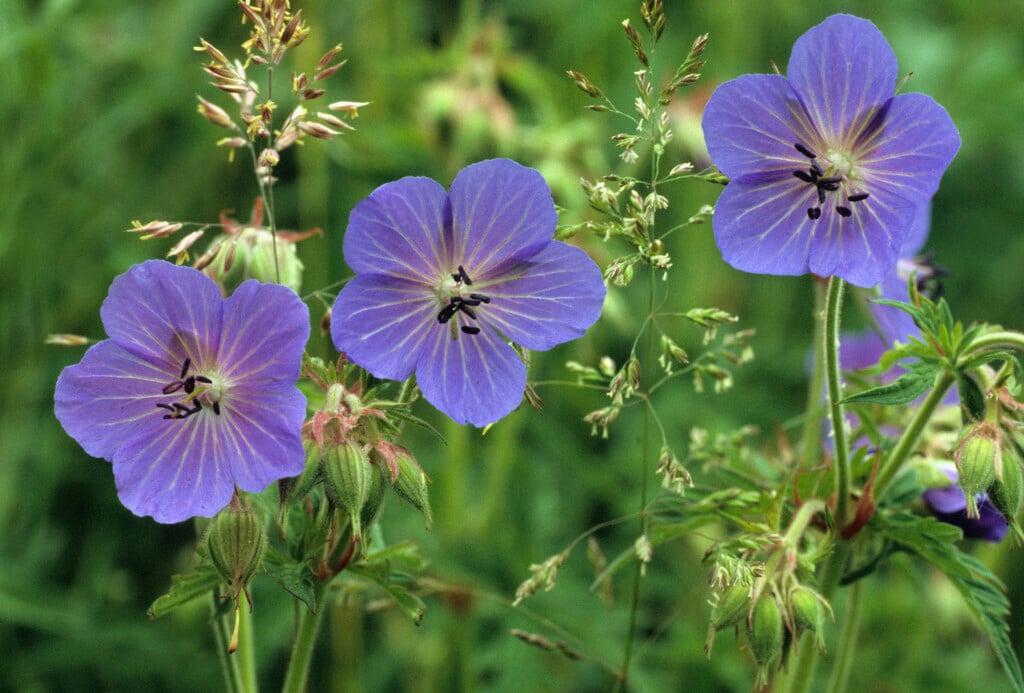Geranium pratense
meadow cranesbill
Clump-forming perennial about 60-90cm tall, with hairy stems and deeply-lobed mid-green foliage. The saucer-shaped, white, blue or violet flowers are 4.5cm across and appear in early to mid-summer
Size
Ultimate height
0.5–1 metresTime to ultimate height
2–5 yearsUltimate spread
0.5–1 metresGrowing conditions
Moisture
Moist but well–drained, Well–drainedpH
Acid, Alkaline, NeutralColour & scent
| Stem | Flower | Foliage | Fruit | |
| Spring | Green | |||
|---|---|---|---|---|
| Summer | Blue Purple White | Green | ||
| Autumn | Green | |||
| Winter |
Position
- Full sun
- Partial shade
Aspect
North–facing or East–facing or South–facing or West–facing
Exposure
Exposed or Sheltered Hardiness
H7Botanical details
- Family
- Geraniaceae
- Native to GB / Ireland
- Yes
- Foliage
- Deciduous
- Habit
- Clump forming
- Genus
Geranium can be annuals, biennials and perennials, herbaceous or evergreen, with rounded, usually palmately lobed or divided leaves, and lax inflorescences of rounded, 5-petalled flowers
- Name status
Correct
- Plant range
- Europe to Himalaya
How to grow
Cultivation
Grow in moderately fertile, well-drained soil in sun or light shade
Propagation
Propagate by seed, or by division in spring or take basal cuttings in early to mid spring and root with bottom heat
Suggested planting locations and garden types
- Coastal
- Cottage and informal garden
- Wildflower meadow
- Wildlife gardens
- Flower borders and beds
- Ground cover
- Underplanting of roses and shrubs
Pruning
Remove flowered stems and old leaves to encourage the production of fresh leaves and flowers
Pests
May be susceptible to vine weevil larvae, geranium sawfly larvae, capsid bug, slugs and snails
Diseases
May be susceptible to powdery mildews, downy mildews, rust diseases and virus diseases
Get involved
The Royal Horticultural Society is the UK’s leading gardening charity. We aim to enrich everyone’s life through plants, and make the UK a greener and more beautiful place.
